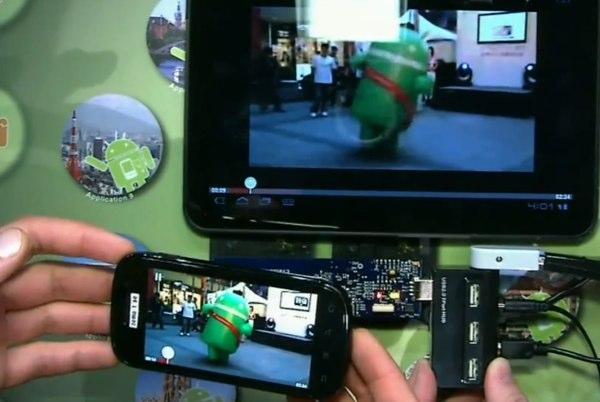
Likely due to its lack of current use and availability or even a real-life showcase of what it is truly capable of, many have written NFC off as a novelty feature and one that they would hardly care for at that. Unless, of course, you are one of the few who see NFC as a viable payment option. However, the powers of Near Field Communication stretch far and wide and have the potential to thrust mobile handset technology into a new, “frictionless” era.
Google, along with many other manufacturers and developers, has also recognized the potential of NFC. With plans to build around the technology, they first introduced NFC in Gingerbread and showcased it with the Nexus S. Considering the Nexus S is currently the only Android phone with NFC capabilities, little has been done with it thus far.
But what happens when more phones with NFC capabilities enter the picture? What can developers do to embrace the powers of this wireless, black magic?
At I/O yesterday, Google gave a demonstration on how to use NFC and what some potential uses of it would be in everyday life. If you had the patience to sit through the Google's hour-long demonstration video of the NFC breakout session, you likely know where I'm going with this. (Note: The first 17 minutes is all you need to watch, unless you are a developer.)
The main goal and primary use of NFC will undoubtedly be content sharing. Months ago I voiced my gripes on how sharing media on Android (or any other platform, for that matter) is still an archaic process. But with NFC, sharing a website or an YouTube video can be as simple as holding two phones together. As the technology develops and grows in interest, so will its capabilities.
All of this can be utilized now as the functionality is available in Gingerbread. But where the real magic begins is where Google is taking NFC. With their next update, Ice Cream Sandwich, they plan to branch out the functionality and usability of NFC. The model is called 0-click in which users will be able to share applications, contacts, and more between NFC enabled phones without having to...well, click anything. They will also provide an API that will allow developers to utilize the technology in their own third-party apps.
For instance, as Alberto Vildosola of AndroidAndMe states, NFC could be used by the Facebook app to friend someone by simply holding your phones together (how nerdy and cheesy would that be?), the same goes for Twitter and following each other. Or as Google demonstrates, you can use NFC to peer-to-peer battle in Android games. The NFC feature that I truly cannot wait for is Foursquare, which is already being tested. But I think my favorite use for NFC comes with the use of tablets.
As you all likely know, I'm a tablet fiend. For some inexplicable reason, I have a deep love for the over-sized smartphones. But for the life of me, I can't understand why there is no simple way to share media between your Android phone and tablet. Google aims to fix that with NFC, simulating a Chrome to Phone-like experience by sharing a web page between a Nexus S and a NFC rigged XOOM.
Before long, revolutionary software updates are bound to plateau. Google's strong concentration on NFC gives them the ability to keep their platform fresh with effortless content sharing and capabilities that are left to the clever and infinitely creative Android developers. It could also play a big part in warding off those heel-biters for a couple more years, that is, if NFC ever truly takes off.
Image via Engadget